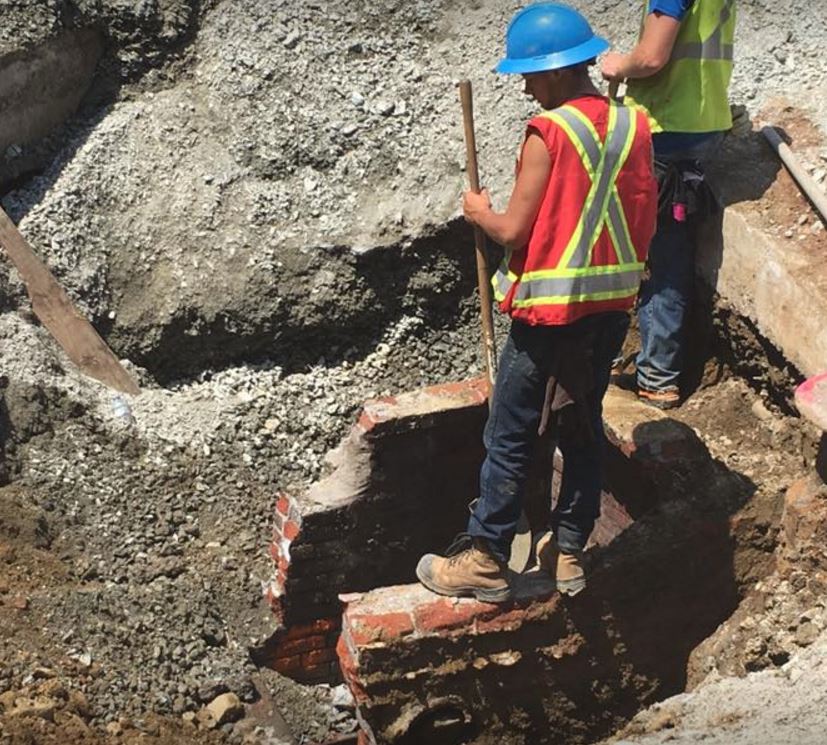The discovery of an 1800s piece of infrastructure at a downtown Halifax construction site has created quite the “buzz” on social media.

“When they [construction workers] first exposed it, someone took a photo and said, ‘oh my god it’s a tunnel entrance,’ and it’s very much blown up on social media,” said Laura de Boer, the site archaeologist for the Argyle and Grafton Shared Streetscape project.
Underground tunnels have been a topic of fascination for many Nova Scotians for decades.
“It’s a very cool story. We would love to find a tunnel, as a student I was very hopeful,” de Boer said.

Get breaking National news
de Boer says “smaller” discoveries of tunnels have been discovered in the city, but no network.
“We do have some short length tunnels that certain businesses would have used historically to get goods in. There would be like a hatch in the sidewalk to bring it in underground,” de Boer said.
The discovery made on Argyle Street turned out to be a manhole estimated to be built in the late 19th century.
“If I had to ballpark, I’d say probably sometime between 1880-1920. It’s reasonably old and it needs to be replaced,” de Boer said.
de Boer said the brick manhole was used to access storm water and sewer line.
“It looks very much like a tunnel entrance from away but as soon as you walk closer to it and you look in, you can clearly see that it’s just providing access to a tunnel,” de Boer said.
An excavator dredged up the line and tiny pieces of artifacts were discovered, including a “Wedgewood” saucer, estimated to be made sometime between 1854-1860.
All artifacts are recorded and donated to the Nova Scotia Museum.
Despite the lack of discoveries in tunnels, de Boer said there’s plenty of other interesting items found in Halifax development sites.
Including an old bottle of hair tonic containing arsenic, discovered in a dug up privy on South Park Street.
“It smelled really nice but it had rosewater, arsenic and lead in it, to give your hair a ‘nice natural shine’ they said.”









Comments